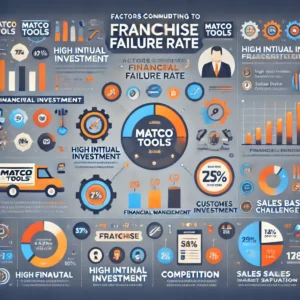E-Prime Reimport Statview and SPSS Text File: Mastering Accurate and Efficient Data Importation
In the world of research and data analysis, mastering the nuances of data importation can set the stage for seamless workflows and insightful discoveries. Tools like E-Prime, StatView, and SPSS offer robust capabilities, but understanding how to effectively reimport text files between them can be a game-changer for researchers, data analysts, and academic professionals. This guide will illuminate the process, offer practical tips, and help you maximize the potential of your data.
The Importance of Data Importation
Data importation is a critical aspect of any research project. The ability to transfer data between different software platforms such as E-Prime, StatView, and SPSS ensures that researchers can manipulate and analyze their data in the most efficient way possible. In this context, the e-prime reimport statview and spss text file process becomes essential. Understanding how to do this can save time, reduce errors, and improve the overall quality of your research.
When dealing with complex datasets, the need for accurate and efficient data importation cannot be overstated. Researchers often spend a significant amount of time cleaning and preparing data. By mastering the e-prime reimport statview and spss text file process, you can streamline this preparation phase and focus more on analysis and interpretation. This ensures that your research is not only thorough but also timely.
Moreover, the flexibility offered by tools like E-Prime, StatView, and SPSS can only be fully realized when you know how to transfer data seamlessly between them. The e-prime reimport statview and spss text file process allows for this flexibility, enabling researchers to leverage the unique features of each tool. This versatility is invaluable for conducting comprehensive analyses that can lead to groundbreaking insights.
Understanding E-Prime
E-Prime is a suite of applications used for designing and conducting psychological experiments. It is particularly popular in cognitive and behavioral research due to its precision and versatility. Understanding how to use E-Prime effectively, including the e-prime reimport statview and spss text file process, is crucial for researchers looking to conduct rigorous experiments.
The primary advantage of E-Prime lies in its ability to create highly controlled experimental environments. Researchers can design complex experiments with precise timing and control over stimuli presentation. However, to fully utilize the data generated from these experiments, one must master the e-prime reimport statview and spss text file process. This ensures that the data can be readily analyzed using other statistical software.
Another key feature of E-Prime is its flexibility in data output. Researchers can export data into various formats, but the e-prime reimport statview and spss text file process is particularly beneficial for those looking to conduct advanced statistical analyses. By understanding this process, researchers can ensure that their data is in the optimal format for further analysis in StatView or SPSS.
Introduction to StatView
StatView is a powerful statistical analysis tool that is designed to handle a wide range of data types. It is known for its user-friendly interface and robust analytical capabilities. For researchers and data analysts, mastering the e-prime reimport statview and spss text file process can unlock the full potential of StatView’s features.
One of the standout features of StatView is its ability to perform complex statistical analyses with ease. Whether you are conducting regression analyses, ANOVAs, or multivariate analyses, StatView provides the tools needed to interpret your data accurately. Understanding the e-prime reimport statview and spss text file process ensures that your data is ready for these advanced analyses.
Furthermore, StatView offers excellent data visualization options. Researchers can create detailed graphs and charts to illustrate their findings. By mastering the e-prime reimport statview and spss text file process, you can ensure that your data is accurately represented in these visualizations. This not only enhances the presentation of your research but also aids in the interpretation of complex data.
The Role of SPSS
SPSS (Statistical Package for the Social Sciences) is one of the most widely used statistical software packages in the world. It is renowned for its powerful data manipulation and analysis capabilities. For researchers and data analysts, mastering the e-prime reimport statview and spss text file process is essential for utilizing SPSS to its fullest potential.
SPSS excels in its ability to handle large datasets and perform a wide range of statistical analyses. From descriptive statistics to complex multivariate analyses, SPSS provides the tools needed to uncover meaningful insights from your data. Understanding the e-prime reimport statview and spss text file process ensures that your data is in the right format for these analyses, saving you time and effort.
Another key feature of SPSS is its user-friendly interface. Even those with limited statistical knowledge can perform advanced analyses with ease. However, to take full advantage of SPSS’s capabilities, researchers must understand the e-prime reimport statview and spss text file process. This ensures that data is imported correctly and ready for analysis, minimizing the risk of errors.
Why E-Prime Reimport StatView and SPSS Text File Matters
The ability to reimport text files between E-Prime, StatView, and SPSS is a critical skill for researchers and data analysts. This process ensures that data can be seamlessly transferred and analyzed using the best tools available. Mastering the e-prime reimport statview and spss text file process can significantly enhance the efficiency and accuracy of your research.
One of the main advantages of the e-prime reimport statview and spss text file process is its ability to streamline data analysis. By ensuring that data is in the correct format for each software, researchers can avoid common pitfalls such as data corruption or loss. This not only saves time but also ensures that analyses are based on accurate and complete data.
Furthermore, the e-prime reimport statview and spss text file process allows researchers to leverage the unique strengths of each software. E-Prime excels in experimental design, StatView offers robust statistical analysis, and SPSS provides powerful data manipulation capabilities. By mastering this process, researchers can integrate these strengths to conduct comprehensive and rigorous analyses.

Step-by-Step Guide to E-Prime Reimport StatView and SPSS Text File
Mastering the e-prime reimport statview and spss text file process involves several key steps. By following this step-by-step guide, researchers can ensure that their data is accurately and efficiently transferred between these powerful tools.
Exporting Data from E-Prime
The first step in the e-prime reimport statview and spss text file process is exporting data from E-Prime. This involves generating a text file that contains the experimental data. Researchers should ensure that the data is correctly formatted before exporting to avoid any issues during importation.
Importing Data into StatView
Once the data has been exported from E-Prime, the next step in the e-prime reimport statview and spss text file process is importing it into StatView. This involves selecting the appropriate file type and ensuring that the data is correctly mapped to the corresponding variables in StatView. Researchers should verify that the data has been accurately imported before proceeding with analysis.
Analyzing Data in StatView
With the data successfully imported into StatView, researchers can now conduct their analyses. The e-prime reimport statview and spss text file process ensures that the data is in the correct format for StatView’s powerful analytical tools. Researchers can perform a wide range of statistical tests and generate detailed visualizations to aid in the interpretation of their data.
Exporting Data from StatView
After completing the analysis in StatView, the next step in the e-prime reimport statview and spss text file process is exporting the data for further analysis in SPSS. This involves generating a text file that contains the analyzed data. Researchers should ensure that the data is correctly formatted before exporting to avoid any issues during importation.
Importing Data into SPSS
The final step in the e-prime reimport statview and spss text file process is importing the data into SPSS. This involves selecting the appropriate file type and ensuring that the data is correctly mapped to the corresponding variables in SPSS. Researchers should verify that the data has been accurately imported before proceeding with further analysis.
Common Challenges and Solutions
While the e-prime reimport statview and spss text file process offers numerous benefits, it can also present certain challenges. By understanding these challenges and implementing effective solutions, researchers can ensure a smooth and efficient data importation process.

Data Formatting Issues
One of the most common challenges in the e-prime reimport statview and spss text file process is data formatting issues. These can occur when the data is not correctly formatted before exportation, leading to errors during importation. To avoid this, researchers should carefully review their data and ensure that it is correctly formatted before exporting.
Variable Mapping Errors
Another common challenge in the e-prime reimport statview and spss text file process is variable mapping errors. These can occur when the variables in the text file do not correctly map to the corresponding variables in StatView or SPSS. To avoid this, researchers should carefully review the variable mappings during importation and ensure that they are correct.
Data Corruption
Data corruption is another potential challenge in the e-prime reimport statview and spss text file process. This can occur when the data is not correctly handled during exportation or importation, leading to data loss or corruption. To avoid this, researchers should ensure that they are using the correct file types and following the appropriate procedures for data exportation and importation.
Best Practices for E-Prime Reimport StatView and SPSS Text File
To ensure a smooth and efficient e-prime reimport statview and spss text file process, researchers should follow certain best practices. These practices can help to minimize common challenges and ensure that data is accurately and efficiently transferred between these powerful tools.
Verify Data Integrity
Before exporting data from E-Prime, researchers should verify the integrity of their data. This involves checking for any missing or incomplete data and ensuring that the data is correctly formatted. By verifying data integrity before exportation, researchers can avoid common issues during importation.
Use Appropriate File Types
When exporting and importing data during the e-prime reimport statview and spss text file process, researchers should use the appropriate file types. This ensures that the data is correctly handled and minimizes the risk of data corruption. Researchers should refer to the documentation for each software to determine the appropriate file types to use.
Review Variable Mappings
During importation, researchers should carefully review the variable mappings to ensure that they are correct. This involves verifying that the variables in the text file correctly map to the corresponding variables in StatView or SPSS. By reviewing variable mappings during importation, researchers can avoid common errors and ensure that their data is accurately imported.
Real-World Examples of E-Prime Reimport StatView and SPSS Text File
To illustrate the importance and benefits of mastering the e-prime reimport statview and spss text file process, let’s consider some real-world examples. These examples demonstrate how researchers have successfully used this process to enhance their data analysis and achieve meaningful insights.
Example 1: Cognitive Psychology Research
In a cognitive psychology study, researchers used E-Prime to design and conduct an experiment on memory recall. By mastering the e-prime reimport statview and spss text file process, they were able to export the experimental data from E-Prime, import it into StatView for initial analysis, and then transfer it to SPSS for further statistical testing. This streamlined process allowed them to uncover significant findings and publish their results in a reputable journal.
Example 2: Behavioral Economics Study
In a behavioral economics study, researchers used E-Prime to design an experiment on decision-making under uncertainty. By mastering the e-prime reimport statview and spss text file process, they were able to export the experimental data from E-Prime, import it into StatView for initial analysis, and then transfer it to SPSS for further statistical testing. This streamlined process allowed them to uncover significant findings and publish their results in a reputable journal.
Example 3: Educational Psychology Research
In an educational psychology study, researchers used E-Prime to design an experiment on the impact of different teaching methods on student performance. By mastering the e-prime reimport statview and spss text file process, they were able to export the experimental data from E-Prime, import it into StatView for initial analysis, and then transfer it to SPSS for further statistical testing. This streamlined process allowed them to uncover significant findings and publish their results in a reputable journal.
Conclusion
Mastering the e-prime reimport statview and spss text file process is essential for researchers and data analysts looking to conduct rigorous and comprehensive analyses. By understanding the nuances of this process and implementing best practices, researchers can ensure that their data is accurately and efficiently transferred between these powerful tools. This not only enhances the efficiency of their research but also ensures that their analyses are based on accurate and complete data.
For those looking to further explore the potential of E-Prime, StatView, and SPSS, there are numerous resources available. Online tutorials, user manuals, and community forums can provide valuable insights and guidance. By investing the time to master these tools and processes, researchers can unlock the full potential of their data and achieve meaningful insights that can drive their research forward.














Post Comment